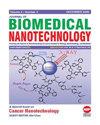Follistatin-Like Protein 1 Alleviates Renal Ischemia-Reperfusion Injury by Regulating MicroRNA-21
IF 2.9
4区 医学
Q1 Medicine
引用次数: 0
Abstract
A mouse renal ischemia-reperfusion injury (RIRI) model was used to investigate how follistatin-Like Protein 1 (FSTL1) provides renal protection post-RIRI by targeting inflammation, apoptosis, and microRNA (miRNA). RIRI was induced in 8-week-old male C57BL/6 mice, followed by FSTL1 recombinant protein treatment. Inflammation and apoptosis in kidney tissues were assessed using ELISA and flow cytometry. A cellular RIRI model was created using hypoxia/reoxygenation (H/R) in HK-2 cells to validate FSTL1’s effects. miRNA-mediated mechanisms were explored using cell transfection and dual-luciferase assays. RIRI mice exhibited elevated inflammation and apoptosis, while FSTL1 treatment mitigated these effects. Similarly, FSTL1 attenuated H/R-induced HK-2 cell damage. miR-21 expression decreased in H/R-treated HK-2 cells, which FSTL1 reversed. miR-21 mimic reduced H/R-induced HK-2 cell damage, while its inhibition decreased FSTL1’s protection. Notably, miR-21 targeted caspase-7 and suppressed its activity. FSTL1 alleviated mouse RIRI by upregulating miR-21, thereby reducing inflammation and apoptosis in kidney tissues post-RIRI. This study highlights FSTL1’s therapeutic potential through the miR-21-mediated regulation of inflammation and apoptosis in RIRI.类花粉素蛋白 1 通过调节 MicroRNA-21 减轻肾缺血再灌注损伤
研究人员利用小鼠肾缺血再灌注损伤(RIRI)模型研究了类绒毛素蛋白1(FSTL1)如何通过靶向炎症、细胞凋亡和微RNA(miRNA)在RIRI后为肾脏提供保护。在 8 周大雄性 C57BL/6 小鼠中诱导 RIRI,然后处理 FSTL1 重组蛋白。使用酶联免疫吸附试验(ELISA)和流式细胞术评估肾脏组织中的炎症和凋亡。使用细胞转染和双荧光素酶测定法探讨了 miRNA 介导的机制。RIRI 小鼠表现出炎症和细胞凋亡升高,而 FSTL1 治疗则减轻了这些影响。同样,FSTL1 可减轻 H/R 诱导的 HK-2 细胞损伤。H/R 处理的 HK-2 细胞中 miR-21 表达减少,而 FSTL1 可逆转这种情况。值得注意的是,miR-21 以 caspase-7 为靶点,抑制了它的活性。FSTL1 通过上调 miR-21 减轻了小鼠 RIRI,从而减少了 RIRI 后肾组织的炎症和细胞凋亡。这项研究强调了 FSTL1 通过 miR-21 介导的对 RIRI 中炎症和细胞凋亡的调节的治疗潜力。
本文章由计算机程序翻译,如有差异,请以英文原文为准。
求助全文
约1分钟内获得全文
求助全文
来源期刊
CiteScore
4.30
自引率
17.20%
发文量
145
审稿时长
2.3 months
期刊介绍:
Information not localized

 求助内容:
求助内容: 应助结果提醒方式:
应助结果提醒方式:


